-
 Bitcoin
Bitcoin $115300
-2.49% -
 Ethereum
Ethereum $3692
-3.87% -
 XRP
XRP $2.984
-4.58% -
 Tether USDt
Tether USDt $0.9999
0.00% -
 BNB
BNB $787.2
-1.20% -
 Solana
Solana $170.2
-5.34% -
 USDC
USDC $0.9998
0.00% -
 Dogecoin
Dogecoin $0.2078
-6.39% -
 TRON
TRON $0.3260
-0.36% -
 Cardano
Cardano $0.7309
-5.54% -
 Hyperliquid
Hyperliquid $41.34
-3.01% -
 Stellar
Stellar $0.3949
-4.34% -
 Sui
Sui $3.553
-6.65% -
 Chainlink
Chainlink $16.83
-5.61% -
 Bitcoin Cash
Bitcoin Cash $560.6
-4.21% -
 Hedera
Hedera $0.2495
-4.52% -
 Avalanche
Avalanche $22.32
-4.77% -
 Ethena USDe
Ethena USDe $1.001
-0.02% -
 Toncoin
Toncoin $3.488
2.00% -
 UNUS SED LEO
UNUS SED LEO $8.948
0.11% -
 Litecoin
Litecoin $105.8
-4.58% -
 Shiba Inu
Shiba Inu $0.00001234
-5.03% -
 Polkadot
Polkadot $3.666
-4.57% -
 Uniswap
Uniswap $9.345
-8.18% -
 Monero
Monero $306.8
-1.86% -
 Dai
Dai $1.000
0.00% -
 Bitget Token
Bitget Token $4.379
-3.52% -
 Cronos
Cronos $0.1395
-5.68% -
 Pepe
Pepe $0.00001070
-6.53% -
 Aave
Aave $259.7
-6.67%
How does the WMA help in building a disciplined crypto trading plan?
The Weighted Moving Average (WMA) enhances crypto trading by prioritizing recent prices, offering timely entry and exit signals, improving stop-loss accuracy, and reducing overtrading through trend validation.
Jul 30, 2025 at 07:57 pm
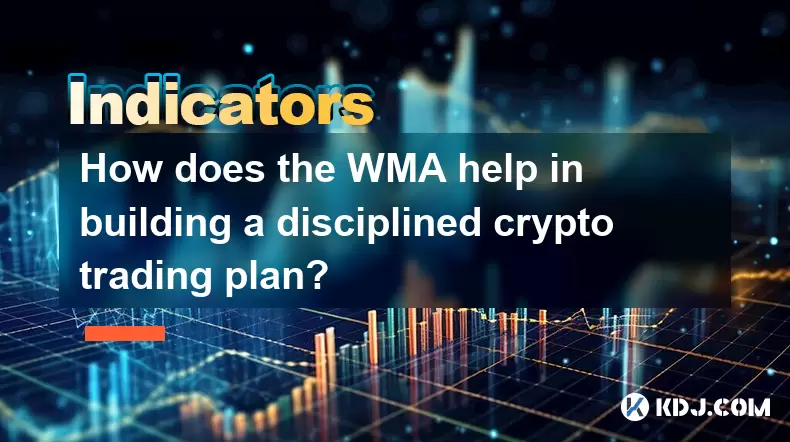
Understanding the Weighted Moving Average (WMA) in Crypto Trading
The Weighted Moving Average (WMA) is a technical indicator used by traders to analyze price trends by assigning greater importance to recent data points. Unlike the Simple Moving Average (SMA), which treats all prices equally over a specified period, the WMA emphasizes recent price action, making it more responsive to new market information. In the volatile world of cryptocurrency trading, this responsiveness is critical. Traders rely on timely signals to enter or exit positions, and the WMA helps filter out noise by highlighting momentum shifts faster than other moving averages. By giving higher weight to newer prices, the WMA adapts quickly to sudden price swings common in crypto markets, such as those seen during Bitcoin halving events or major exchange outages.
Role of WMA in Defining Entry and Exit Points
One of the primary ways the WMA supports a disciplined trading plan is by providing clear entry and exit signals. When the current price crosses above the WMA line, it may indicate the beginning of an uptrend, suggesting a potential buy signal. Conversely, when the price falls below the WMA, it can signal a downtrend, prompting a sell or short position. To implement this effectively, traders often use a dual-WMA strategy, combining a short-term WMA (e.g., 10-period) with a longer-term one (e.g., 50-period). A bullish crossover occurs when the short-term WMA crosses above the long-term WMA, reinforcing the buy decision. A bearish crossover signals the opposite. These rules eliminate emotional decision-making, a common pitfall in crypto trading where FOMO (fear of missing out) and panic selling are prevalent.
- Set the short-term WMA (e.g., 10-period) on your trading chart
- Apply the long-term WMA (e.g., 50-period) on the same chart
- Monitor for crossovers between the two lines
- Execute a buy order only when the short-term WMA crosses above the long-term WMA
- Place a sell order when the short-term WMA crosses below the long-term WMA
- Confirm signals with volume indicators to reduce false positives
This systematic approach ensures that every trade follows a predefined rule, reinforcing discipline.
Enhancing Risk Management with WMA-Based Stop-Loss Strategies
A disciplined trading plan must include risk mitigation techniques, and the WMA can be instrumental in setting dynamic stop-loss levels. Instead of using fixed percentage-based stops, traders can place stop-loss orders just below the current WMA in an uptrend, or above it in a downtrend. This method adjusts the stop-loss as the trend progresses, protecting profits while allowing room for normal price fluctuations. For instance, in a rising Bitcoin trend, a trader might set a stop-loss slightly below the 20-period WMA. If the price dips to that level and breaks it, the position is automatically closed, preventing deeper losses. The adaptive nature of the WMA makes this strategy more effective than static stops, especially in high-volatility environments.
- Identify the prevailing trend using the slope of the WMA
- In an uptrend, place stop-loss orders just below the WMA line
- In a downtrend, position stop-loss above the WMA
- Adjust stop-loss levels as the WMA updates with new data
- Use additional confirmation from RSI or MACD to avoid premature exits
This technique keeps risk exposure aligned with current market dynamics.
Using WMA to Avoid Overtrading in Crypto Markets
Overtrading is a common issue among crypto traders, often driven by emotional reactions to price spikes or dips. The WMA helps reduce impulsive decisions by acting as a filter for trade validity. If the price is far from the WMA line, especially in a strong trend, it may indicate overextension, signaling a potential reversal or pullback. Traders can use this insight to pause and reassess rather than jumping into a trade. For example, if Ethereum’s price surges 15% above its 30-day WMA in a single day, the indicator suggests the asset may be overbought. Instead of buying the peak, a disciplined trader waits for the price to retest the WMA for support before entering. This patience prevents chasing the market and aligns actions with a structured plan.
- Monitor the distance between price and WMA to assess overextension
- Avoid entering long positions when price is significantly above WMA
- Refrain from shorting when price is sharply below WMA in a downtrend
- Wait for price to re-approach the WMA before considering entry
- Combine with Bollinger Bands to confirm overbought or oversold conditions
This approach instills patience and reduces the frequency of low-probability trades.
Backtesting Your WMA Strategy for Consistency
Before deploying any WMA-based strategy in live markets, backtesting is essential to ensure its reliability. Traders can use historical crypto price data to simulate how their WMA rules would have performed over time. Most trading platforms, such as TradingView or MetaTrader, allow users to apply WMA indicators and replay past market conditions. By reviewing past crossovers, stop-loss triggers, and profit outcomes, traders can refine their parameters. For instance, testing a 14-period WMA against a 50-period WMA on Bitcoin’s 2021 price action can reveal how many false signals occurred during sideways markets. Adjusting the periods or adding volume filters can improve accuracy. This process turns subjective hunches into data-driven decisions, a cornerstone of discipline.
- Select a historical timeframe (e.g., 6 months of BTC/USD data)
- Apply your chosen WMA settings to the chart
- Manually or programmatically record all crossover signals
- Track the outcome of each simulated trade (profit, loss, duration)
- Adjust WMA periods or add confirmation indicators based on results
- Repeat the test on different assets (e.g., ETH, SOL) to assess robustness
Backtesting builds confidence and ensures the plan is grounded in evidence.
Frequently Asked Questions
How do I choose the right WMA period for crypto trading?
The optimal WMA period depends on your trading style. Short-term traders may use a 7 to 14-period WMA for faster signals, while swing traders often prefer 20 to 50 periods to capture medium-term trends. Test different lengths on historical data to see which aligns best with your risk tolerance and time horizon.
Can WMA be combined with other indicators for better accuracy?
Yes. Combining WMA with Relative Strength Index (RSI) or Volume Weighted Average Price (VWAP) improves signal reliability. For example, a WMA crossover confirmed by RSI exiting oversold territory increases the probability of a valid buy signal.
Is WMA effective in sideways or ranging crypto markets?
WMA performs best in trending markets. In sideways conditions, it may generate frequent false signals due to price oscillating around the line. To counter this, use WMA alongside range indicators like Bollinger Bands or horizontal support/resistance levels.
Does WMA work the same across all cryptocurrencies?
While the WMA calculation is consistent, its effectiveness varies by asset. High-liquidity coins like Bitcoin and Ethereum tend to follow WMA signals more reliably due to smoother price action. Lower-cap altcoins with erratic movements may produce misleading crossovers, requiring additional filters.
Disclaimer:info@kdj.com
The information provided is not trading advice. kdj.com does not assume any responsibility for any investments made based on the information provided in this article. Cryptocurrencies are highly volatile and it is highly recommended that you invest with caution after thorough research!
If you believe that the content used on this website infringes your copyright, please contact us immediately (info@kdj.com) and we will delete it promptly.
- Ripple, XRP, and RLUSD: Navigating Growth and Innovation
- 2025-08-01 08:30:37
- Tether's Triumph: Profits, US Initiatives, and Stablecoin Supremacy
- 2025-08-01 09:11:00
- Ethereum, ZK-VMs, and Quantum Resistance: A New Era for Blockchain Security?
- 2025-08-01 09:30:12
- Ethereum: Institutional Interest Surges Amid Network Upgrades
- 2025-08-01 08:50:19
- JPMorgan, Ripple, and Blockchain Payments: A New York Minute on Institutional Adoption
- 2025-08-01 08:30:37
- Coinbase Goes All-In: Tokenized Stocks, Prediction Markets, and the Future of Finance
- 2025-08-01 08:50:19
Related knowledge
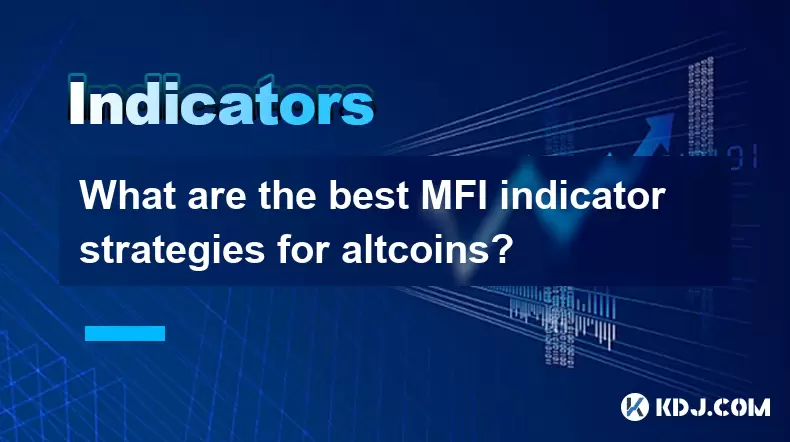
What are the best MFI indicator strategies for altcoins?
Aug 01,2025 at 08:01am
Understanding the MFI Indicator in Altcoin TradingThe Money Flow Index (MFI) is a momentum oscillator that measures the flow of money into or out of a...
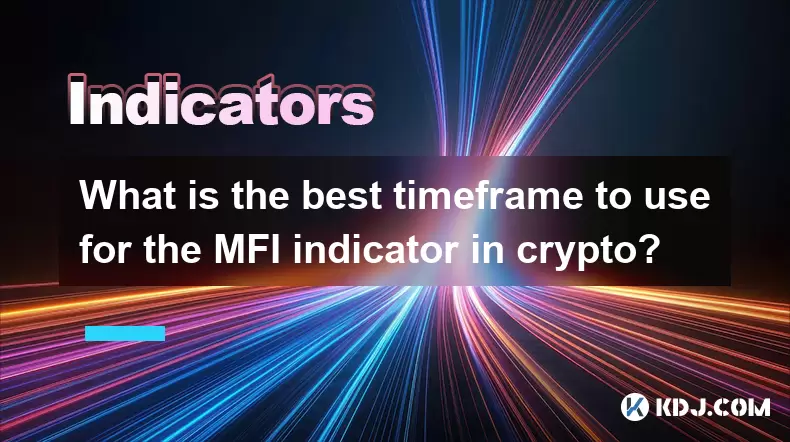
What is the best timeframe to use for the MFI indicator in crypto?
Aug 01,2025 at 09:02am
Understanding the MFI Indicator in Cryptocurrency TradingThe Money Flow Index (MFI) is a momentum oscillator that measures the flow of money into and ...
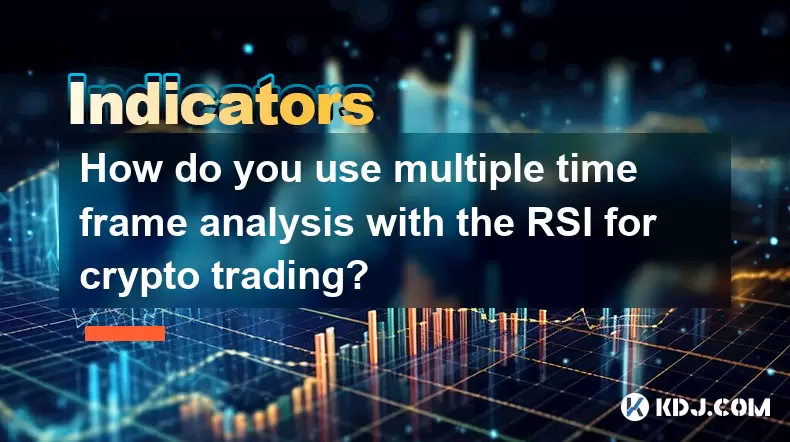
How do you use multiple time frame analysis with the RSI for crypto trading?
Aug 01,2025 at 05:19am
Understanding the Role of RSI in Crypto TradingThe Relative Strength Index (RSI) is a momentum oscillator that measures the speed and change of price ...
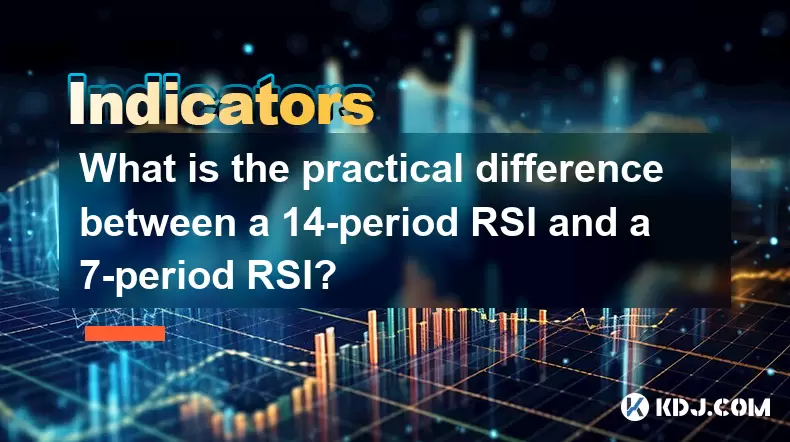
What is the practical difference between a 14-period RSI and a 7-period RSI?
Aug 01,2025 at 07:01am
Understanding the Relative Strength Index (RSI)The Relative Strength Index (RSI) is a momentum oscillator widely used in cryptocurrency trading to mea...
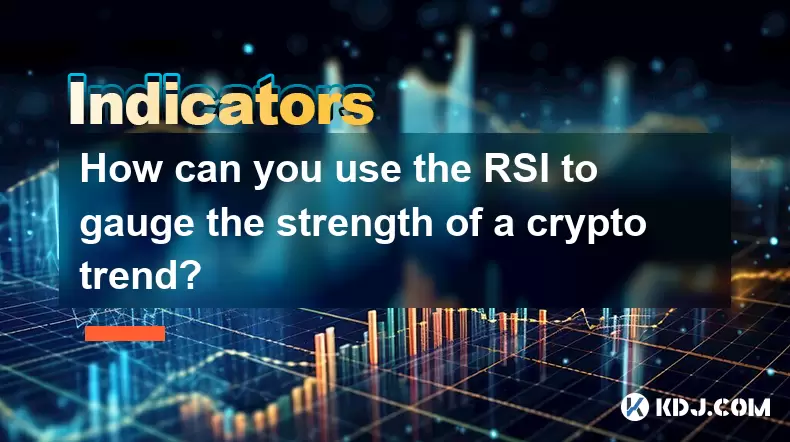
How can you use the RSI to gauge the strength of a crypto trend?
Aug 01,2025 at 08:35am
Understanding the RSI and Its Role in Crypto AnalysisThe Relative Strength Index (RSI) is a momentum oscillator that measures the speed and change of ...
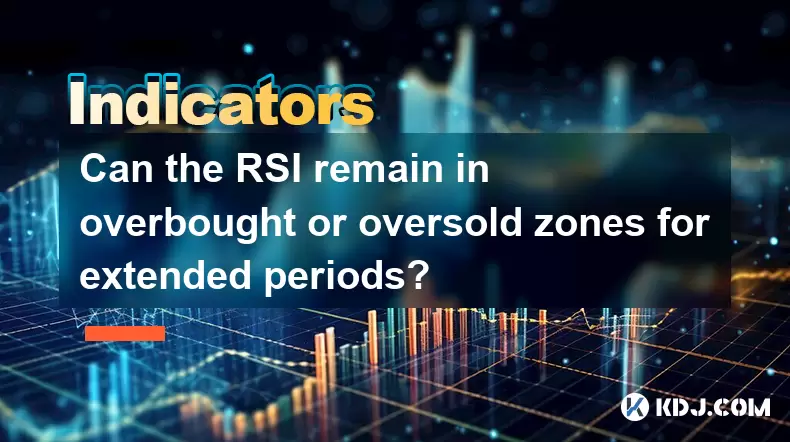
Can the RSI remain in overbought or oversold zones for extended periods?
Aug 01,2025 at 07:10am
Understanding the RSI and Its Standard InterpretationThe Relative Strength Index (RSI) is a momentum oscillator that measures the speed and change of ...

What are the best MFI indicator strategies for altcoins?
Aug 01,2025 at 08:01am
Understanding the MFI Indicator in Altcoin TradingThe Money Flow Index (MFI) is a momentum oscillator that measures the flow of money into or out of a...

What is the best timeframe to use for the MFI indicator in crypto?
Aug 01,2025 at 09:02am
Understanding the MFI Indicator in Cryptocurrency TradingThe Money Flow Index (MFI) is a momentum oscillator that measures the flow of money into and ...

How do you use multiple time frame analysis with the RSI for crypto trading?
Aug 01,2025 at 05:19am
Understanding the Role of RSI in Crypto TradingThe Relative Strength Index (RSI) is a momentum oscillator that measures the speed and change of price ...

What is the practical difference between a 14-period RSI and a 7-period RSI?
Aug 01,2025 at 07:01am
Understanding the Relative Strength Index (RSI)The Relative Strength Index (RSI) is a momentum oscillator widely used in cryptocurrency trading to mea...

How can you use the RSI to gauge the strength of a crypto trend?
Aug 01,2025 at 08:35am
Understanding the RSI and Its Role in Crypto AnalysisThe Relative Strength Index (RSI) is a momentum oscillator that measures the speed and change of ...

Can the RSI remain in overbought or oversold zones for extended periods?
Aug 01,2025 at 07:10am
Understanding the RSI and Its Standard InterpretationThe Relative Strength Index (RSI) is a momentum oscillator that measures the speed and change of ...
See all articles

























































































